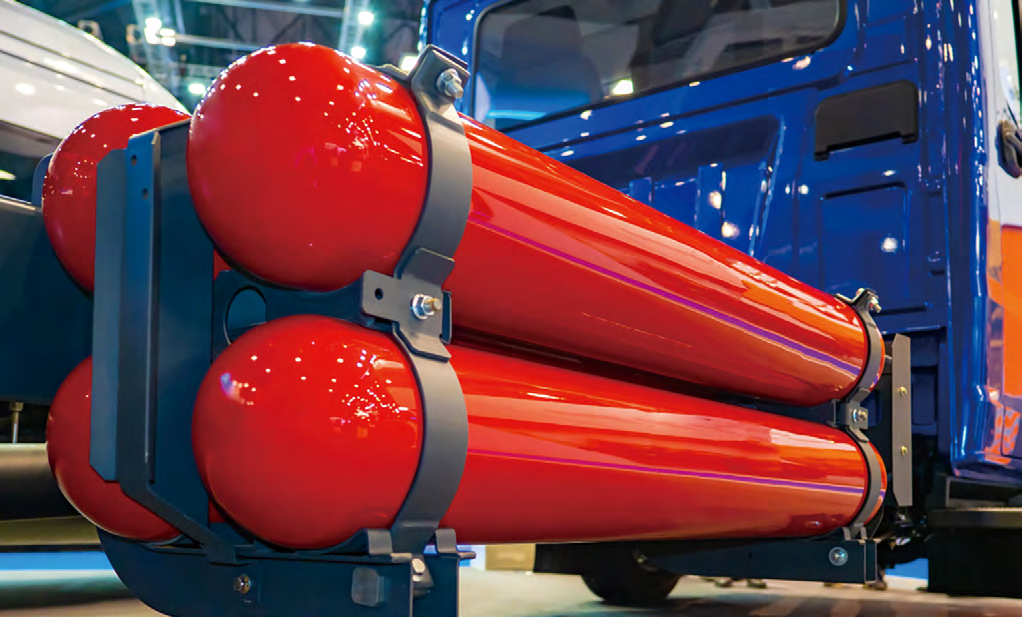


Gas is the blood of modern industry. It is in extensive use in almost every sector of the national economy, such as machinery, petroleum, chemical engineering, fire protection, medical care, energy, urban construction, food, metallurgy, electronics, automobile, and residential living. It is safe to say that where there is industry, there is gas.
To transport gas to different places, an important device is gas cylinder. Even in the most developed countries, gas is stored and delivered in bottles. Compressed gas is usually poisonous, flammable, combustible, corrosive, or oxidizable, which bring potential safety hazards. Risks are even increased due to a large quantity and strong mobility of gas cylinders which are usually transported and handled in varied scenarios. A proper manage of gas cylinders is critical for people's life and property.
Keeping pace with industry development
China has always attached great importance to the safety management of gas cylinders. As early as in 1961, Interim Provisions on the Safety Administration of Gas Cylinders was promulgated, which raised safety and technical requirements on every link of gas cylinders' life cycle, including design, manufacturing, testing, filling, storage, and use. The document was revised and renamed to fit in new safety and production conditions in 1965, which served as the first regulation on gas cylinder safety in China to actively promote the safety use of gas cylinders and reduce relevant accidents. In the following years, after rounds of revisions and amendments, the document was eventually evolved into the Regulation on Safety Technology for Gas Cylinders (TSG 23-2021) in 2021. Whatever changes have been made, the document sticks to the bottom line of ensuring the fundamental safety of gas cylinder, and lays a solid foundation for its safe use in China.
Since the reform and opening up in 1978, Chinese industries have embraced fast development and required more on the performance, material and pressure parameter of gas cylinders, leading to a great progress on the variety, design, and manufacturing of gas cylinders.
Prior to the 1980s, there were only seamless steel gas cylinder and welded steel gas cylinder in China. In the early 1980s, dissolved acetylene cylinder packed with porous calcium silicate filler became popular, replacing the high-polluting, accident-prone, and high energy-consuming mobile acetylene generator. In the mid-1980s, seamless aluminum alloy cylinder with light weight and high efficiency was widely applied; and at the end of the 1990s, filament wound composite cylinder was developed to meet the needs of CNG clean-energy vehicles and portable respiration aiding devices, which cut the weight/volume ratio of cylinders down to 0.7-0.5kg/L from 1.4kg/L. At the beginning of the 21st century, high vacuum low thermal insulation technology was applied in cylinder production, making the traditional permanent gases – oxygen, nitrogen, argon, and LNG – transportable and storable in a liquid form, and greatly improving the efficiency of gas transportation.
The gas cylinder industry has closely followed the industrial and technological advancements, and offered new types of cylinders with high parameters to meet new market demands, providing strong support to the development of every industry and the national economy.
In order to manage the increasing types of gas cylinders, SAC/TC 31 on gas cylinder was established in 1983. After 30 years of construction, a mature standards system has taken shape, covering standards on general principles, products, accessories, filling, inspection, testing, use, and informatization of gas cylinders. There are 70 standards released, and 6 standards under development by far. See the Figure 1.

Keeping in step with international standards
SAC/TC 31 is the Chinese counterpart of ISO/TC 58. As a member of ISO/TC 58 and its subcommittees of SC 2, SC 3 and SC 4, China actively participated the relevant international standard work by sending experts to get involved in the work of each working group, and join the plenary meeting of ISO/TC 58 and SC 3 every year. China hosted two plenary meetings of ISO/TC 58 and its SC 3 in Beijing and Hangzhou respectively. The close cooperation between SAC/TC 31 and ISO/TC 58 enables China to follow the development trends of international gas cylinder technology, and develop and revise Chinese standards in time to keep in step with international standards.
In the past 30 years, standardization has led the gas cylinder industry to grow from weak to strong, making a nation with only two types of cylinders in the 1970s develop into a great power capable of producing seamless aluminum alloy cylinders, stainless steel cylinders, filament wound composite cylinders, high vacuum low thermal adiabatic cylinders, and dissolved (adsorptive) cylinders with inner packing. The production mix and applied range of gas cylinders in China have covered all cylinder types worldwide, and are developing in line with the international trend. China ranks among the top in the world in terms of total production and inventory of gas cylinders, which has become a great power producing, consuming, and exporting gas cylinders.
Any advancement of national economy cannot be realized without concerted efforts and mutual support from every industry. Taking hydrogen energy and fuel cell vehicles that lead contemporary energy development for instance, light and high-pressure cylinders are needed to store the hydrogen fuel. The working pressure of gas cylinder shall reach as high as 70 MPa with hydrogen density of 5% according to the required driving mileage of vehicles. To cope with that, GB/T 35544-2017, Fully-wrapped carbon fiber reinforced cylinders with an aluminum liner for the on-board storage of compressed hydrogen as a fuel for land vehicles, came into force in 2017, one year earlier than ISO 19881-2018, Gaseous hydrogen - Land vehicle fuel containers. Under the great support of SAC, the project on Fully-wrapped carbon fiber reinforced cylinders with a plastic liner for the on-board storage of compressed hydrogen as a fuel for land vehicles (planned No.: 20210875-T-469) was approved in 2021, indicating a major leap forward of China in making high-pressure hydrogen storage cylinders.
(Chinese version provided by SAC/TC 31 on gas cylinders; edited and translated by Liu Hongbo)
供稿:全国气瓶标准化技术委员会(SAC/TC 31); 编译:刘宏博